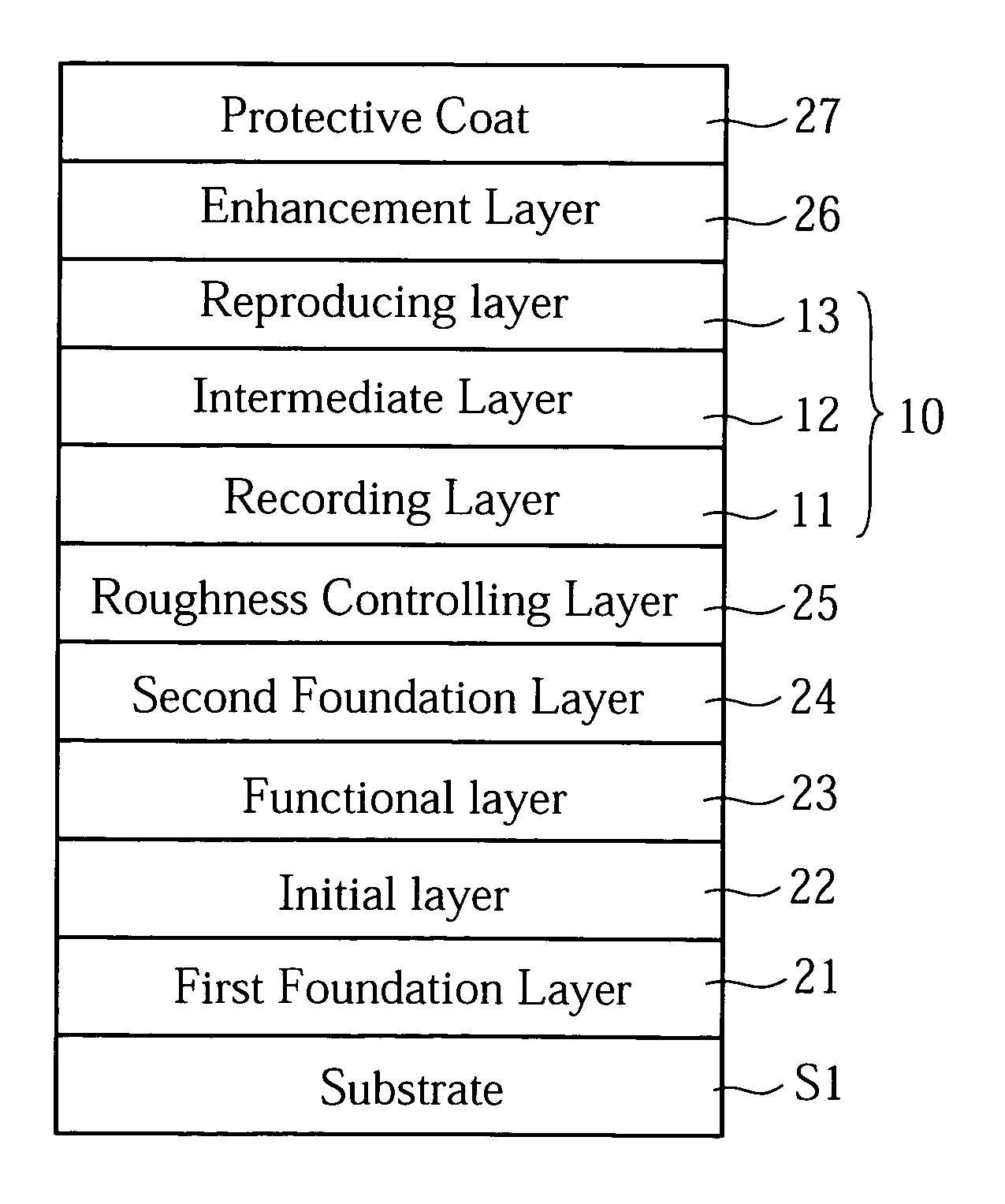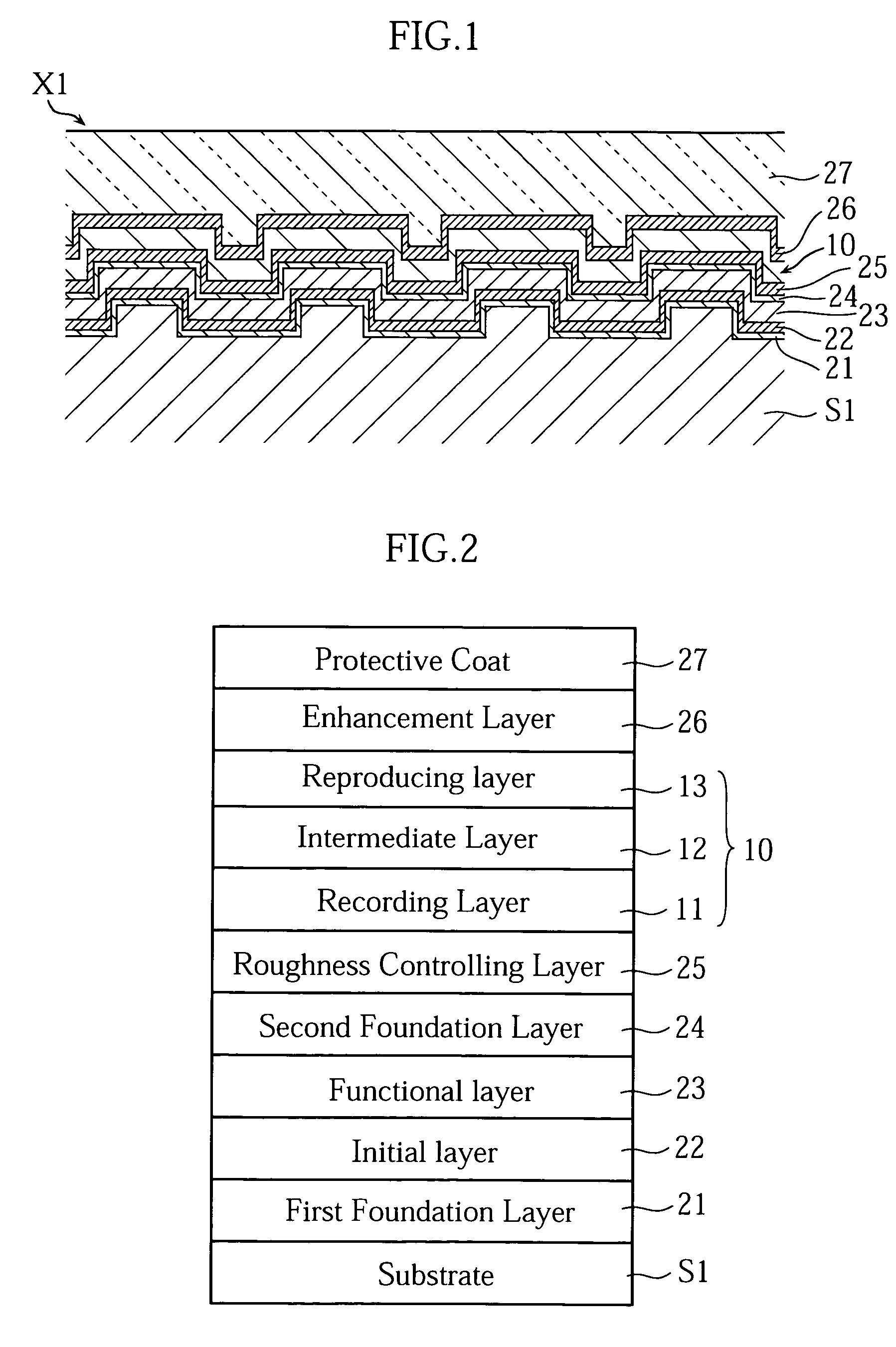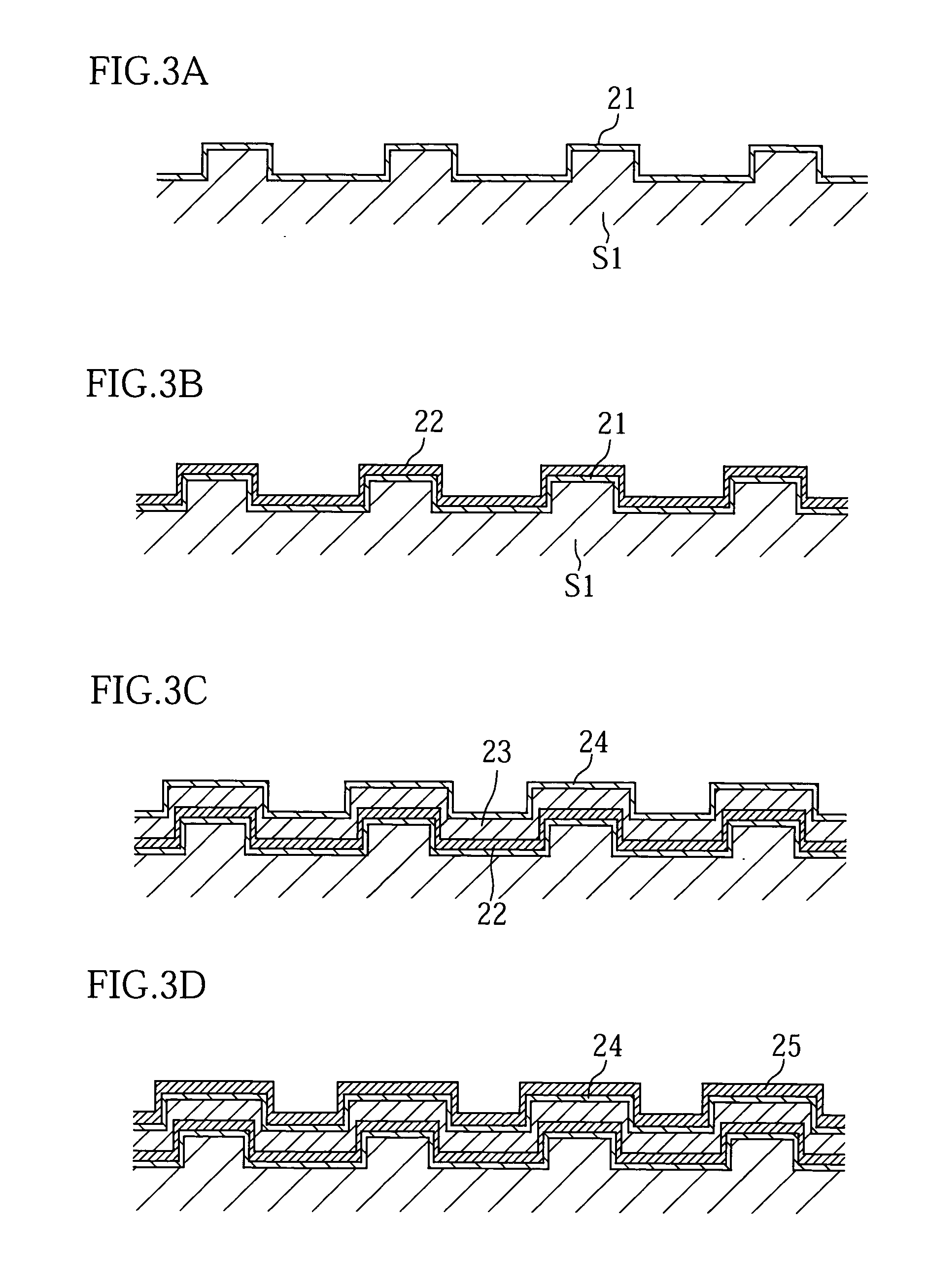Recording medium and method of making the same
a recording medium and recording layer technology, applied in the field of recording medium, can solve the problems of increasing the pin force acting on the domain walls, the magnetic structure of the recording layer is significantly disorganized, and it is difficult to use a lens having a large numerical aperture for a conventional optical system of a back illumination type, etc., to achieve the effect of reducing surface tension, reducing the degree of minuteness and uniformity, and reducing the number of layers
- Summary
- Abstract
- Description
- Claims
- Application Information
AI Technical Summary
Benefits of technology
Problems solved by technology
Method used
Image
Examples
example 1
[0098] [Preparation of Magneto-Optical Recording Medium]
[0099] In this example, a magneto-optical recording medium having the laminated structure shown in FIG. 18 was prepared as a magneto-optical disk of a front illumination type. In the preparation of the magneto-optical recording medium, a polycarbonate substrate (diameter: 120 mm, thickness: 1.2 mm, track pitch: 0.275 nm, groove depth: 35 nm) having a surface with a land / groove structure was prepared. On the substrate, an Si—N film as the first foundation layer was formed to a thickness of 2 nm by sputtering. Specifically, the SiN film was formed by reactive sputtering using an Si target, and Ar gas and N2 gas as sputter gas. The sputtering was performed using a rotational cathode type DC-RF magnetron sputtering apparatus (Tradename: C3010-P5, manufactured by ANELVA CORPORATION). (The same apparatus was used also in the subsequent sputtering steps in the recording medium preparation.) In the sputtering, with the flow ratio of Ar...
example 2
[0115] [Preparation of Magneto-Optical Recording Medium]
[0116] In this example, a magneto-optical recording medium having the laminated structure shown in FIG. 20 was prepared as a magneto-optical disk of a front illumination type. The magneto-optical recording medium of this example includes a magnetic recording portion comprising a recording layer, an intermediate layer and a reproducing layer. The reproducing layer has such a structure that expansion of magnetic domains and displacement of domain walls occur during the reproducing process.
[0117] In the preparation of the magneto-optical recording medium, a first foundation layer, an initial layer, a heat sink layer, a second foundation layer and a roughness controlling layer were successively formed on a polycarbonate substrate (diameter: 120 mm, thickness 1.2 mm, track pitch: 0.275 nm, groove depth: 35 nm) similarly to Example 1.
[0118] Subsequently, a Tb22Fe62Co16 film as a recording layer was formed on the roughness controlli...
PUM
 Login to View More
Login to View More Abstract
Description
Claims
Application Information
 Login to View More
Login to View More - R&D
- Intellectual Property
- Life Sciences
- Materials
- Tech Scout
- Unparalleled Data Quality
- Higher Quality Content
- 60% Fewer Hallucinations
Browse by: Latest US Patents, China's latest patents, Technical Efficacy Thesaurus, Application Domain, Technology Topic, Popular Technical Reports.
© 2025 PatSnap. All rights reserved.Legal|Privacy policy|Modern Slavery Act Transparency Statement|Sitemap|About US| Contact US: help@patsnap.com



